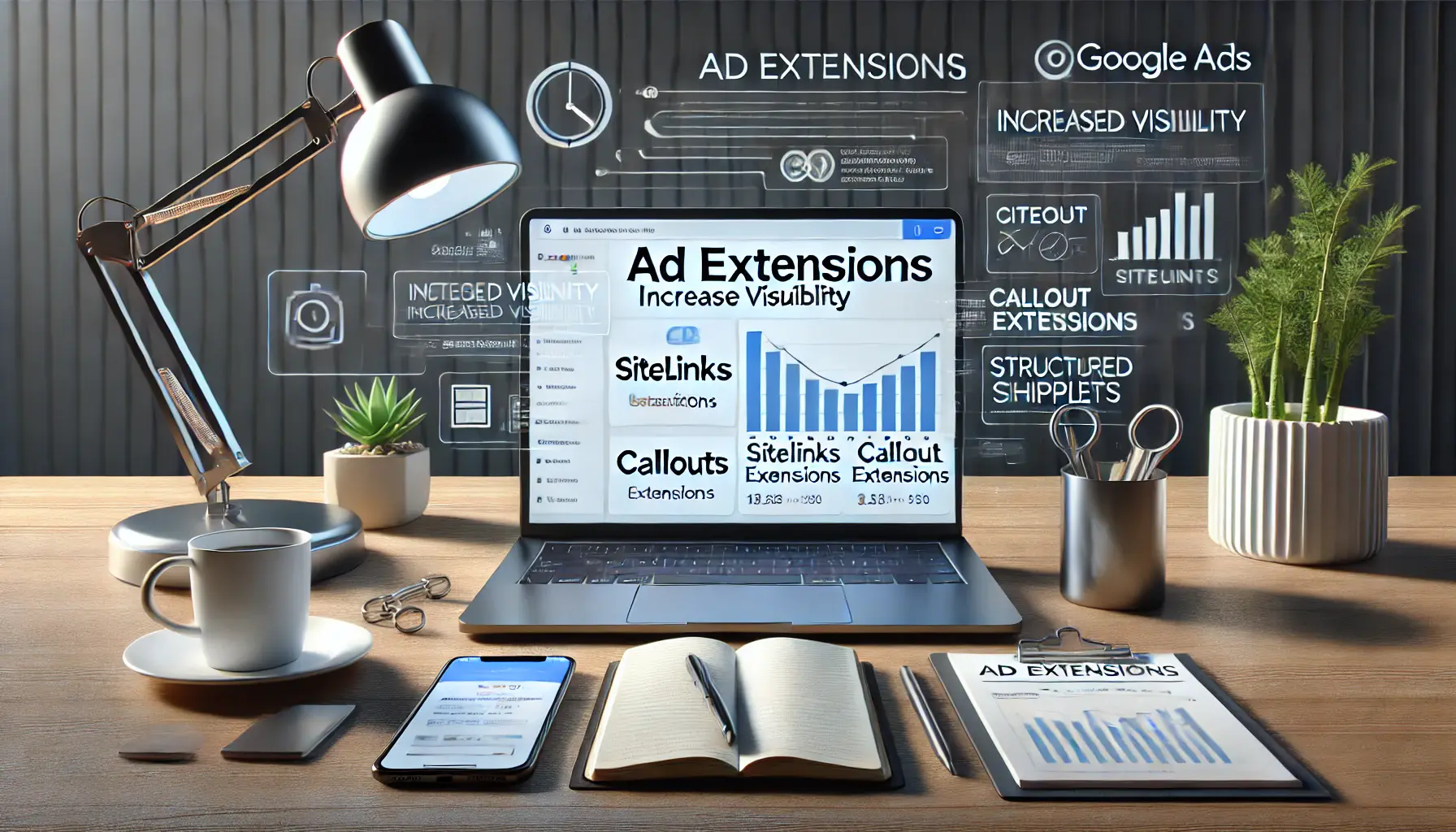In today’s digital landscape, affiliate marketingA performance-based marketing strategy where individuals earn commissions by promoting products or services. has risen to be one of the most effective strategies for creating income by promoting products while earning commissions.
The success or failure of affiliate marketing depends more on how effectively the ideal audience is reached.
That is what Google AdsAn online advertising platform by Google that allows businesses to display ads on Google’s search engine and other platforms. does: it puts affiliate marketers on a level where their promotions reach future customers at the right moment—while they are searching for related goods or services.
- Understanding the Role of Google Ads in Affiliate Marketing
- Setting Up Your Google Ads Account for Affiliate Marketing
- Crafting Effective Ad Campaigns for Affiliate Offers
- Optimizing Google Ads Performance for Affiliate Marketing
- Ensuring Compliance with Google Ads Policies in Affiliate Marketing
- Maximizing Success in Affiliate Marketing with Google Ads
- Frequently Asked Questions About Affiliate Marketing with Google Ads
Understanding the Role of Google Ads in Affiliate Marketing
Integrating Google Ads into your affiliate marketing strategy can offer numerous benefits, including increased visibility, targeted reach, and improved conversion rates.
However, it’s essential to consider several factors before launching your campaigns to ensure compliance and effectiveness.

Illustration of the advantages of using Google Ads in affiliate campaigns, emphasizing analytics and targeted advertising.
Benefits of Integrating Google Ads into Affiliate Campaigns
Utilizing Google Ads in affiliate marketing provides several advantages:
- Enhanced Visibility: Google Ads allows your affiliate promotions to appear prominently in search results, increasing the likelihood of attracting potential customers.
- Targeted Advertising: With advanced targeting options, you can reach specific demographics, locations, and interests, ensuring your ads are seen by the most relevant audience.
- Measurable Results: Google Ads offers detailed analytics, enabling you to track the performance of your campaigns and make data-driven decisions to optimize your strategy.

Illustration highlighting the important considerations before launching a Google Ads campaign for affiliate marketing, focusing on planning and readiness.
Key Considerations Before Launching Google Ads for Affiliates
Before integrating Google Ads into your affiliate marketing efforts, consider the following:
- Compliance with Policies: Ensure your campaigns adhere to Google Ads policies, especially regarding affiliate marketing, to avoid potential account suspensions.
- Quality of Landing Pages: The content on your landing page should be useful, and the user experience should be smooth to enhance ad relevance and Quality Score.
- Budget Management: Clearly define your budget and bidding strategy to keep costs in check while ensuring a good return on investment.
By taking into consideration all these factors, you will be able to effectively use Google Ads for the success of your affiliate marketing campaigns and reach a bigger audience for earning more commissions.
Integrating Google Ads into affiliate marketing offers unparalleled benefits, including visibility, reach, and data-driven results.
- Google Ads helps bridge the gap between products and targeted audiences.
- Ad compliance and preparation are essential for success.

Illustration of the steps to set up a Google Ads account for affiliate marketing, emphasizing campaign configuration and account setup.
Setting Up Your Google Ads Account for Affiliate Marketing
Embarking on affiliate marketing with Google Ads requires a well-structured account setup to ensure your campaigns run smoothly and effectively.
Let’s walk through the essential steps to get your Google Ads account ready for affiliate marketing success.

Illustration of the steps to create and configure a Google Ads account, focusing on sign-up, campaign setup, and budget configuration.
Creating and Configuring a Google Ads Account
To begin, you’ll need to establish a Google Ads account:
- Sign Up: Visit the Google Ads homepage and click on ‘Start Now’ to create your account. Use an email address associated with your business for seamless management.
- Define Your Billing Information: Enter your billing details accurately to ensure uninterrupted ad delivery. Choose a payment method that aligns with your financial preferences.
- Set Up Conversion Tracking: Implement conversion tracking to monitor actions like purchases or sign-ups. This data is crucial for assessing your campaigns’ performance and making informed adjustments.

undefined
Defining Campaign Objectives and Goals
Clear objectives are the foundation of a successful affiliate marketing campaign:
- Identify Your Goals: Decide if your priority is driving sales, generating leads, or increasing website traffic. Your goals determine the course of your campaign strategy and measurement criteria.
- Ensure Alignment with Affiliate Offers: Make sure your campaign objectives align with the products or services you are promoting. This increases ad relevance and effectiveness.
- Set Measurable Targets: Establish specific metrics, such as a target number of conversions or a desired return on investment (ROI), to evaluate your campaign’s success.

Illustration of the process of selecting the right campaign types for affiliate marketing in Google Ads, with campaign icons and strategic notes.
Selecting Appropriate Campaign Types for Affiliates
Choosing the right campaign type is pivotal in reaching your intended audience:
- Search Campaigns: Display text ads to users actively searching for keywords related to your affiliate products. This approach captures high-intent prospects.
- Display Campaigns: Apply visually attractive banner advertisements across Google’s Display Network to gain brand awareness and engage customers during their browsing activities.
- Video Campaigns: Engage audiences on platforms like YouTube with video ads, offering an interactive and engaging way to showcase your affiliate offerings.
By carefully setting up your Google Ads account with these considerations, you will establish a solid foundation for affiliate marketing.
A well-prepared account ensures targeted traffic and facilitates your success in affiliate marketing.
Key Steps for Account Setup
- Create a business-linked Google Ads account.
- Set up conversion tracking to measure campaign success.
- Define objectives to ensure your ads align with affiliate goals.

Illustration of crafting effective ad campaigns for affiliate offers within Google Ads, focusing on ad copy, targeting, and performance optimization.
Crafting Effective Ad Campaigns for Affiliate Offers
Creating compelling ad campaigns is crucial for the success of your affiliate marketing efforts.
By focusing on strategic keyword research, persuasive ad copy, and optimized landing pages, you can significantly enhance your campaign’s performance.

Illustration of conducting keyword research to identify the right audience for affiliate marketing, focusing on tools and strategic analysis.
Conducting Keyword Research to Target the Right Audience
Identifying the appropriate keywords is the foundation of a successful Google Ads campaign.
Here’s how to approach it:
- Make Use of Keyword Research Tools: Leverage tools like Google Keyword Planner, Ahrefs, or SEMrush to discover relevant keywords for your affiliate products. These platforms provide insights into search volume, competition, and related terms.
- Analyze Competitor Keywords: Examine the keywords your competitors are ranking for to identify potential opportunities and gaps in your own strategy.

undefined
Writing Compelling Ad Copy that Converts
Your ad copy plays a pivotal role in capturing attention and driving clicks.
Consider the following best practices:
- Highlight Unique Selling Propositions (USPs): Clearly communicate what sets your affiliate offer apart, such as exclusive discounts or unique features.
- Include Powerful CTAs: Use action-oriented language such as “Shop Now,” “Learn More,” or “Get Started Today.”
- Ensure Your Ad Copy Aligns with the Search Intent: The ad copy should address the user’s query directly and offer a relevant solution.

Illustration of designing high-converting landing pages, emphasizing user experience, mobile optimization, and effective CTAs.
Designing High-Converting Landing Pages
Once a user clicks on your ad, the landing page should effectively convert their interest into action:
- Maintain Consistency: Messaging and offers in the ad should be mirrored on the landing page to create a seamless user experience.
- Optimize for Mobile Devices: With a majority of users browsing on their mobile devices, your landing page must be responsive and load quickly on every device.
- Include Clear CTAs: Place prominent and persuasive calls to action that guide the user towards the desired conversion.

undefined
Using Ad Extensions to Increase Visibility
Ad extensions can provide more information and give your ad a larger visual presence:
- Sitelink Extensions: Direct users deeper into your site to specific pages of special offers or product categories.
- Callout Extensions: Highlight key benefits or features of your affiliate product, like “Free Shipping” or “24/7 Customer Support.”
- Structured Snippet Extensions: Showcase specific aspects of your products or services, such as brands or product types.
By meticulously crafting your ad campaigns with these strategies, you can effectively reach your target audience and drive meaningful conversions in your affiliate marketing endeavors.
Best Practices for Campaign Success
Focus on crafting compelling ad copy, researching strategic keywords, and creating user-friendly landing pages to drive conversions.
- Keyword relevance ensures your ad reaches the right audience.
- Consistency across ads and landing pages builds trust and engagement.

Illustration of optimizing Google Ads performance for affiliate marketing, focusing on metrics like CTR, conversion rates, and ROAS.
Optimizing Google Ads Performance for Affiliate Marketing
Enhancing the effectiveness of your Google Ads campaigns is essential for maximizing returns in affiliate marketing.
By implementing strategic optimization techniques, you can improve ad relevance, increase click-through rates, and boost conversions.

Illustration of utilizing negative keywords to refine targeting in Google Ads, with visual elements emphasizing the filtering process.
Utilizing Negative Keywords to Refine Targeting
Incorporating negative keywords helps prevent your ads from appearing in irrelevant searches, ensuring they reach the most pertinent audience:
- Irrelevant Term Identification: Regularly review search term reports to identify queries that do not relate to your affiliate offers and add them to your negative keywords.
- Apply Negative Keyword Lists: Create and use negative keyword lists at either the campaign or account level to simplify management and ensure consistency across campaigns.
- Choose Appropriate Match Types: Utilize broad, phrase, or exact match types for negative keywords to control the specificity of exclusions effectively.

Illustration of monitoring and analyzing campaign performance in Google Ads, with graphs, charts, and analytics icons highlighting key metrics.
Monitoring and Analyzing Campaign Performance
Continuous monitoring and analysis are vital for informed decision-making and campaign refinement:
- Track Key Metrics: Focus on metrics such as click-through rates (CTR), conversion rates, and return on ad spend (ROAS) to assess performance.
- Utilize A/B Testing: Experiment with different ad copies, headlines, and visuals to determine which combinations yield the best results.
- Adjust Bidding Strategies: Modify bids based on performance data to allocate budget effectively towards high-performing keywords and ads.

Illustration of leveraging Google’s optimization tools to enhance Google Ads campaign effectiveness, with icons and performance metrics.
Leveraging Google’s Optimization Tools
Google Ads offers several tools that are designed to optimize campaign performance:
- Performance Max Campaigns: Leverage Google’s AI-powered campaigns for optimal bidding across all Google channels to increase conversions.
- Recommendations Page: Regularly review Google’s automatic recommendations on enhancing your campaign, including adding new keywords and adjusting bids.
- Conversion Tracking: Enable conversion tracking to understand what users are doing after clicking through your ads, providing data for informed optimization.
Applying these optimization techniques will improve the performance of your Google Ads campaigns by driving more engagement and increasing conversion rates in affiliate marketing.
Optimization requires continuous monitoring and the use of negative keywords to refine targeting.
- Regularly analyze campaign performance metrics like CTR and ROI.
- Leverage tools like Performance Max Campaigns to enhance results.

Illustration of ensuring compliance with Google Ads policies in affiliate marketing, with elements representing policy guidelines and checks.
Ensuring Compliance with Google Ads Policies in Affiliate Marketing
Adhering to Google Ads policies is crucial for affiliate marketers to maintain account standing and achieve successful campaigns.
Non-compliance can lead to ad disapprovals or account suspensions, impacting your affiliate marketing efforts.

Illustration of understanding Google Ads policies relevant to affiliate marketing, with visual elements emphasizing policy guidelines and compliance.
Understanding Google Ads Policies Relevant to Affiliate Marketing
Google Ads enforces specific policies that affiliate marketers must follow:
- Prohibited Content: Avoid promoting products or services that fall under restricted categories, such as counterfeit goods, dangerous products, or inappropriate content.
- Prohibited Practices: Refrain from deceptive practices like misrepresentation, data collection without consent, or circumventing systems.
- Restricted Content and Features: Some content, like healthcare-related products or financial services, may have additional restrictions or requirements.
- Editorial and Technical Standards: Ensure ads meet quality standards, including proper grammar, clear URLs, and functional landing pages.

Illustration of common mistakes that can lead to Google Ads account suspension, with caution signs and warning icons emphasizing the risks.
Common Mistakes Leading to Account Suspension
Affiliate marketers should be aware of actions that can result in account suspension:
- Direct Linking to Affiliate Offers: Google Ads generally prohibits direct linking to affiliate sites. Use a landing page on your own domain to bridge users to affiliate offers.
- Deceptive Ad Content: Refrain from false claims or misleading information in your ads, as this violates Google’s misrepresentation policies.
- Non-Compliant Landing Pages: Ensure that the content on landing pages is useful to users and not solely designed to redirect users to another page, which would be considered a bridge page and violate policy.

Illustration of best practices for maintaining compliance in Google Ads affiliate marketing, with visual elements emphasizing policy guidelines and security.
Best Practices to Maintain Compliance
To align your affiliate marketing campaigns with Google Ads policies:
- Thoroughly Review Policies: Regularly update yourself with Google’s advertising policies to ensure adherence.
- Provide Transparent Disclosures: Clearly disclose affiliate relationships to maintain transparency with users.
- Deliver Valuable Content: Create landing pages that offer genuine value and information relevant to the ad content.
- Monitor Account Activity: Keep an eye on billing and payment activities to prevent issues that could lead to suspension.
By diligently following these guidelines, affiliate marketers can effectively utilize Google Ads while maintaining compliance and achieving their marketing objectives.
Stay Compliant with Policies
- Avoid direct linking; use landing pages instead.
- Ensure all ad content adheres to Google’s editorial and technical standards.
- Transparent disclosure of affiliate relationships is key to maintaining trust.

Illustration of maximizing success in affiliate marketing with Google Ads, highlighting key metrics and performance indicators.
Maximizing Success in Affiliate Marketing with Google Ads
Throughout this article, we’ve explored how Google Ads serves as a powerful tool for boosting affiliate marketing success.
By effectively leveraging this platform, affiliate marketers can connect with targeted audiences, drive meaningful engagement, and achieve their marketing goals.

undefined
Key Takeaways from Setting Up and Managing Google Ads
To ensure a successful journey with Google Ads, affiliate marketers should focus on key foundational elements:
- Strategic Setup: A well-structured account setup, including conversion tracking and defined campaign objectives, lays the bedrock for success.
- Effective Campaigns: Creating ad campaigns with keyword research, compelling copy, and optimized landing pages ensures maximum audience impact.
- Performance Optimization: Using tools like A/B testing, negative keywords, and Google’s AI-driven Performance Max Campaigns drives continuous improvement.

Illustration of ensuring compliance with Google Ads policies and staying ahead with industry best practices and strategic insights.
Ensuring Compliance and Staying Ahead
Compliance with Google Ads policies is non-negotiable for long-term success.
Adhering to these guidelines not only safeguards account standing but also enhances the credibility of affiliate marketing campaigns:
- Follow editorial and technical standards to meet Google’s quality expectations.
- Create transparent and user-focused campaigns that provide real value to audiences.
- Monitor campaign performance regularly to identify and address potential compliance issues proactively.

undefined
Building a Sustainable Affiliate Marketing Strategy
Affiliate marketing on Google Ads requires a commitment to continuous learning and adaptation.
Focusing on data-driven decision-making and innovative strategies allows marketers to remain competitive and realize sustainable growth.
Moving forward, understand that successful affiliate marketing does not occur in a day.
Rather, it requires consistent effort, creativity, and adherence to best practices.
By effectively using Google Ads and applying the strategies outlined in this article, you can unlock new opportunities in affiliate marketing and maximize your full potential.
Strategic Insights for Long-Term Success
Affiliate marketing with Google Ads requires dedication to compliance, optimization, and strategic goal alignment.
- Success lies in detailed planning and execution.
- Adopt innovative strategies to stay ahead in a competitive space.

undefined
Your campaigns can be managed by an agency specialized in Google Ads, check out our service page.
Frequently Asked Questions About Affiliate Marketing with Google Ads
Below are some common questions and concise answers regarding the use of Google Ads in affiliate marketing.
Yes, you can use Google Ads to promote affiliate products.
However, it’s recommended to direct traffic to your own landing page before redirecting to affiliate offers to comply with Google’s policies.
Direct linking is generally discouraged.
The better practice is to create a landing page on your domain that adds value and then sends users to affiliate offers.
Implement conversion trackingA feature in Google Ads that tracks actions such as purchases or sign-ups resulting from ad clicks. by placing tracking codes on your landing pages and thank-you pages.
This will enable you to track user actions and measure the effectiveness of your campaigns.
Ensure compliance with Google Ads policies, create high-quality landing pages, conduct thorough keyword research, write compelling ad copy, and continuously monitor and optimize your campaigns.
Yes, Google Ads has policies prohibiting the promotion of certain products and services, such as counterfeit goods, dangerous products, and inappropriate content.
Review Google’s policies to ensure compliance.
Enhance Quality ScoreA metric used by Google Ads to determine the relevance and quality of your ads, keywords, and landing pages. by creating relevant ad copy, using targeted keywords, ensuring fast-loading and mobile-friendly landing pages, and providing a positive user experience.
Start with manual CPC bidding to control costs, then consider automated bidding strategies like Target CPA or Target ROAS as you gather performance data to optimize for conversions.
Keyword research is crucial.
Identifying relevant, high-intent keywords ensures your ads reach the right audience, leading to higher click-through rates and conversions.
While possible, it’s not recommended.
Having a website or landing page allows for better control over content, user experience, and compliance with Google Ads policies.













